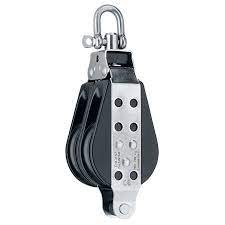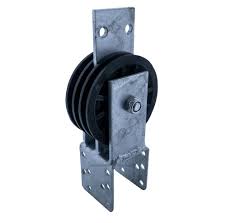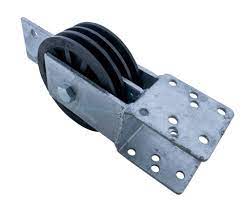Product Description
Product Description
1.Teeth Profile:
|
HTD: |
3M,5M,8M,14M,20M |
|||
|
T&AT: |
T2.5,T5,T10, AT5,AT10,AT20 |
|||
|
STPD: |
S2M,S3M,S4.5M,S5M,S8M,S14M |
|||
|
RPP: |
5M,8M,14M,20M |
|||
|
PGGT (PowerGrip GT): |
2MR,3MR,5MR,8MR,14MR |
|||
2. Materials:
Aluminum timing pulleys
Characteristics:
1.suitable for moderate power transmission
2.light weight / reduced rotational inertia
3.moderate chemical and corrosion resistance
4.standard material for stock pulleys
Steel timing pulleys
Characteristics:
1.suitable for high power transmission
2.durable
3.limited chemical and corrosion resistance
4.aesthetic material
3.Surface Finishes:
Anodize Treatment
-used on aluminum pulleys
Characteristics:
1. Increased chemical and corrosion resistance
2. Available in natural, black, or colored
3. Limited increase of surface hardness
4. Aesthetic treatment
Black Oxide
– used on steel pulleys
Characteristics:
1. Increased chemical and corrosion resistance
2. Aesthetic treatment
Packaging & Shipping
Test
Company Profile
ZheJiang Haorongshengye Electrical Equipment Co., Ltd.
1. Was founded in 2008
2. Our Principle:
“Credibility Supremacy, and Customer First”
3. Our Promise:
“High quality products, and Excellent Service”
4. Our Value:
“Being Honesty, Doing the Best, and Long-lasting Development”
5. Our Aim:
“Develop to be a leader in the power transmission parts industry in the world”
|
6.Our services: |
1).Competitive price |
|||
|
2).High quality products |
||||
|
3).OEM service or can customized according to your drawings |
||||
|
4).Reply your inquiry in 24 hours |
||||
|
5).Professional technical team 24 hours online service |
||||
|
6).Provide sample service |
||||
Main products
Machines
Exbihition
| Manufacturing Process: | Hobbing |
|---|---|
| Material: | Carbon Steel |
| Surface Treatment: | Polishing |
| Application: | Chemical Industry, Grain Transport, Mining Transport, Power Plant |
| Pitch for Arc Tooth: | 3mm/5mm/8mm/14mm/20mm |
| Pitch for T Tooth: | 2mm/5mm/10mm/20mm |
| Samples: |
US$ 100/Piece
1 Piece(Min.Order) | |
|---|
| Customization: |
Available
| Customized Request |
|---|
Are there different types of double pulleys, and how do they vary in applications?
Yes, there are different types of double pulleys that vary in design, construction, and functionality, each with specific applications. Here is a detailed explanation of the various types of double pulleys and how they vary in their applications:
1. Fixed Double Pulleys:
– Fixed double pulleys, also known as static double pulleys, have both pulleys on a common axle or shaft, fixed in position relative to each other. These pulleys do not rotate independently of each other. Fixed double pulleys are commonly used in simple lifting or pulling applications where the direction of force remains constant. They provide mechanical advantage by dividing the load between the two pulleys and allow for efficient load movement in a single direction. Fixed double pulleys are commonly used in basic rigging setups, general lifting tasks, and simple mechanical systems.
2. Swivel Double Pulleys:
– Swivel double pulleys, also called rotating double pulleys, have pulleys that can rotate independently of each other. They are designed with a swivel mechanism that allows the pulleys to rotate around a central axis. Swivel double pulleys offer increased versatility and flexibility in rigging applications. The independent rotation of the pulleys enables rescuers or riggers to change the direction of the applied force, adjust the angle of the load, and manage complex rope configurations. Swivel double pulleys are commonly used in rescue operations, industrial rigging, rock climbing, and other applications requiring dynamic movement and directional control.
3. Tandem Double Pulleys:
– Tandem double pulleys, also known as stacked double pulleys, consist of two pulleys arranged in a tandem configuration, stacked vertically one above the other. The tandem design allows for increased mechanical advantage by creating multiple stages of pulley systems. Tandem double pulleys offer greater lifting power and are commonly used in heavy-duty rigging and lifting operations. They are ideal for scenarios where extremely heavy loads need to be lifted or pulled with reduced effort. Tandem double pulleys find applications in construction, industrial settings, and specialized lifting operations.
4. Prusik Minding Double Pulleys:
– Prusik minding double pulleys are designed with special features to accommodate the use of Prusik knots or other friction hitches. These pulleys have additional side plates or flanges that prevent the Prusik knot from jamming against the pulley body. Prusik minding double pulleys are commonly used in rescue operations and climbing systems where self-locking knots like the Prusik knot are utilized for friction-based progress capture. These pulleys allow for efficient ascending and descending while maintaining proper rope management and minimizing wear on the Prusik knot.
5. High-Efficiency Double Pulleys:
– High-efficiency double pulleys are specifically designed to minimize friction and increase overall system efficiency. They feature ball bearings or roller bearings in the pulley sheaves, reducing the friction between the rope and the pulley, thus optimizing power transmission. High-efficiency double pulleys are commonly used in scenarios where maximum mechanical advantage and minimal energy loss are critical. These pulleys find applications in rescue operations, highline systems, and any rigging setup where efficiency is paramount.
6. Compact Double Pulleys:
– Compact double pulleys are designed to be lightweight, compact, and portable without compromising strength and functionality. These pulleys are often made from lightweight materials such as aluminum or composite materials. Compact double pulleys are suitable for applications where weight and size restrictions are important, such as mountaineering, backpacking, or emergency rescue kits. They offer a balance between strength, portability, and versatility.
7. Specialty Double Pulleys:
– Specialty double pulleys encompass a range of pulleys designed for specific applications or unique requirements. These can include pulleys with specialized features like integrated progress capture mechanisms, auxiliary attachment points, or pulleys designed for specific rope diameters. Specialty double pulleys are used in specialized rescue operations, industrial rigging, and other specific scenarios where the pulley’s unique features cater to the specific needs of the operation.
In summary, different types of double pulleys, such as fixed, swivel, tandem, Prusik minding, high-efficiency, compact, and specialty pulleys, offer varying designs and functionalities. They are utilized in a wide range of applications, including general lifting, rigging operations, rescue scenarios, climbing systems, and industrial settings. Understanding the different types of double pulleys allows rescuers, riggers, and climbers to select the appropriate pulley for their specific application, optimizing performance, efficiency, and safety.
What is the significance of proper alignment and tensioning in double pulley systems?
Proper alignment and tensioning play a crucial role in the performance and safety of double pulley systems. Here is a detailed explanation of the significance of proper alignment and tensioning in double pulley systems:
1. Efficient Power Transmission:
– Proper alignment of double pulleys ensures efficient power transmission within the system. When the pulleys are correctly aligned, the ropes or cables running through them maintain an optimal angle, minimizing friction and energy loss. This allows for smooth and efficient transfer of force, enabling climbers to exert their energy effectively and accomplish tasks with less effort. Improper alignment can result in increased friction, loss of power, and reduced overall system efficiency.
2. Reduced Wear and Tear:
– Proper alignment and tensioning help minimize wear and tear on the ropes, cables, and pulley components. When the pulleys are aligned correctly, the ropes or cables are guided along the pulley grooves without excessive rubbing or twisting. This reduces frictional forces that can cause premature wear and damage to the ropes and pulleys. Proper tensioning ensures that the ropes or cables are neither too loose nor too tight, preventing unnecessary strain and abrasion. By reducing wear and tear, proper alignment and tensioning contribute to the longevity and reliability of the double pulley system.
3. Enhanced Stability and Safety:
– Proper alignment and tensioning enhance the stability and safety of double pulley systems. When the pulleys are aligned correctly, the ropes or cables move smoothly through the system, maintaining balance and preventing unintended shifts or jerks. This promotes stability and reduces the risk of sudden movements that could lead to accidents or loss of control. Proper tensioning ensures that the ropes or cables are securely held in place, minimizing the chances of slippage or failure under load. Enhanced stability and safety in double pulley systems contribute to a more secure and confident climbing experience.
4. Optimal Force Distribution:
– Proper alignment and tensioning facilitate optimal force distribution in double pulley systems. When the pulleys are aligned correctly, the load on the ropes or cables is evenly distributed across the pulley grooves, minimizing stress concentration on specific points. This balanced force distribution helps prevent localized wear and potential weak points in the system. Proper tensioning ensures that the load is evenly distributed along the ropes or cables, avoiding excessive strain on individual components. Optimal force distribution enhances the overall strength and longevity of the double pulley system.
5. Improved Control and Maneuverability:
– Proper alignment and tensioning enable climbers to have better control and maneuverability in double pulley systems. When the pulleys are aligned correctly, climbers can easily adjust the tension in the ropes or cables, allowing for precise movements and positioning. This improves the climbers’ ability to navigate challenging terrain, execute complex maneuvers, and maintain stability during ascents, descents, or hauling operations. Proper tensioning ensures that the ropes or cables respond predictably to the climbers’ inputs, enhancing their control over the system and reducing the risk of unexpected movements.
6. Minimized Risk of Equipment Failure:
– Proper alignment and tensioning help minimize the risk of equipment failure in double pulley systems. When the pulleys are aligned correctly and the tension is appropriately adjusted, the loads are distributed evenly, reducing stress on individual components. This minimizes the chances of pulley misalignment, rope slippage, or component failure. By ensuring that the double pulley system is properly aligned and tensioned, climbers can rely on the system’s strength and integrity, reducing the likelihood of equipment-related accidents or incidents.
7. Training and Skill Development:
– Understanding and implementing proper alignment and tensioning techniques in double pulley systems contribute to climbers’ training and skill development. By learning how to align the pulleys correctly and adjust the tension appropriately, climbers develop a deeper understanding of the mechanics and principles behind the system. This knowledge allows them to optimize the performance of the double pulley system, improve their efficiency, and make informed decisions in various climbing scenarios.
In summary, proper alignment and tensioning are of significant importance in double pulley systems. They ensure efficient power transmission, reduce wear and tear, enhance stability and safety, promote optimal force distribution, improve control and maneuverability, minimize the risk of equipment failure, and contribute to climbers’ training and skill development. By paying attention to proper alignment and tensioning, climbers can maximize the performance and safety of double pulley systems in their recreational activities.
Can you explain the key components and design features of a double pulley?
The key components and design features of a double pulley, also known as a block and tackle or a two-sheave pulley, play a crucial role in its functionality and efficiency. Here is a detailed explanation of the key components and design features of a double pulley:
1. Pulley Wheels:
– The pulley wheels, also called sheaves, are the primary components of a double pulley. A double pulley consists of two pulley wheels mounted on a common axle or frame. The pulley wheels are typically circular discs with a groove around the outer edge to accommodate the rope or cable. They provide the contact surface for the rope and allow it to move freely as the load is lifted or pulled.
2. Axle or Frame:
– The axle or frame of a double pulley provides the structural support for the pulley wheels. It holds the pulley wheels in place and ensures they rotate smoothly. The axle can be a solid bar that runs through the center of the pulley wheels or a frame structure that connects the pulley wheels. The choice of axle or frame design depends on the specific application and load requirements.
3. Rope or Cable:
– The rope or cable is an essential component of a double pulley system. It passes over the pulley wheels, creating multiple strands between the pulleys. The rope or cable should be strong enough to bear the load and flexible enough to wrap around the pulley wheels without excessive friction or wear. Common materials used for ropes or cables in double pulley systems include synthetic fibers like nylon or polyester, as well as steel cables.
4. Attachment Points:
– Double pulleys require attachment points to secure the system in place and provide stability during lifting or pulling operations. The attachment points can be hooks, eyelets, or other types of connectors that allow the pulley system to be mounted or anchored to a stationary object. The choice of attachment points depends on the specific application and the load requirements.
5. Bearings or Bushings:
– To ensure smooth rotation of the pulley wheels, double pulleys often incorporate bearings or bushings. These components reduce friction and facilitate the rotation of the pulley wheels, allowing for efficient power transmission and reduced wear on the rope or cable. Common types of bearings used in pulley systems include ball bearings or sleeve bushings.
6. Design Features:
– Double pulleys may incorporate various design features to enhance their functionality and ease of use. Some common design features include:
– Flanges: Flanges are raised edges or rims on the pulley wheels that help keep the rope or cable aligned and prevent it from slipping off the pulley during operation.
– Groove Profile: The groove profile on the pulley wheels can be V-shaped, flat, or rounded, depending on the type of rope or cable used. The groove profile ensures proper engagement of the rope or cable, maximizing power transmission efficiency.
– Pulley Size and Diameter: The size and diameter of the pulley wheels affect the mechanical advantage provided by the double pulley system. Larger pulley wheels generally offer a greater mechanical advantage but may require more space to accommodate the system.
– Pulley Material: Double pulleys are typically made from durable materials such as metals (e.g., steel or aluminum) or high-strength plastics. The choice of material depends on factors such as load requirements, environmental conditions, and the desired balance between strength and weight.
– Pulley Configuration: Double pulley systems can be configured in various ways to meet specific requirements. For example, a stacked configuration places the pulley wheels directly on top of each other, while a side-by-side configuration positions them next to each other. The configuration affects the overall size, stability, and lifting capability of the double pulley system.
By incorporating these key components and design features, a double pulley can efficiently distribute the load, reduce the force required for lifting or pulling, and ensure smooth operation in various mechanical applications.
editor by CX
2023-12-11




